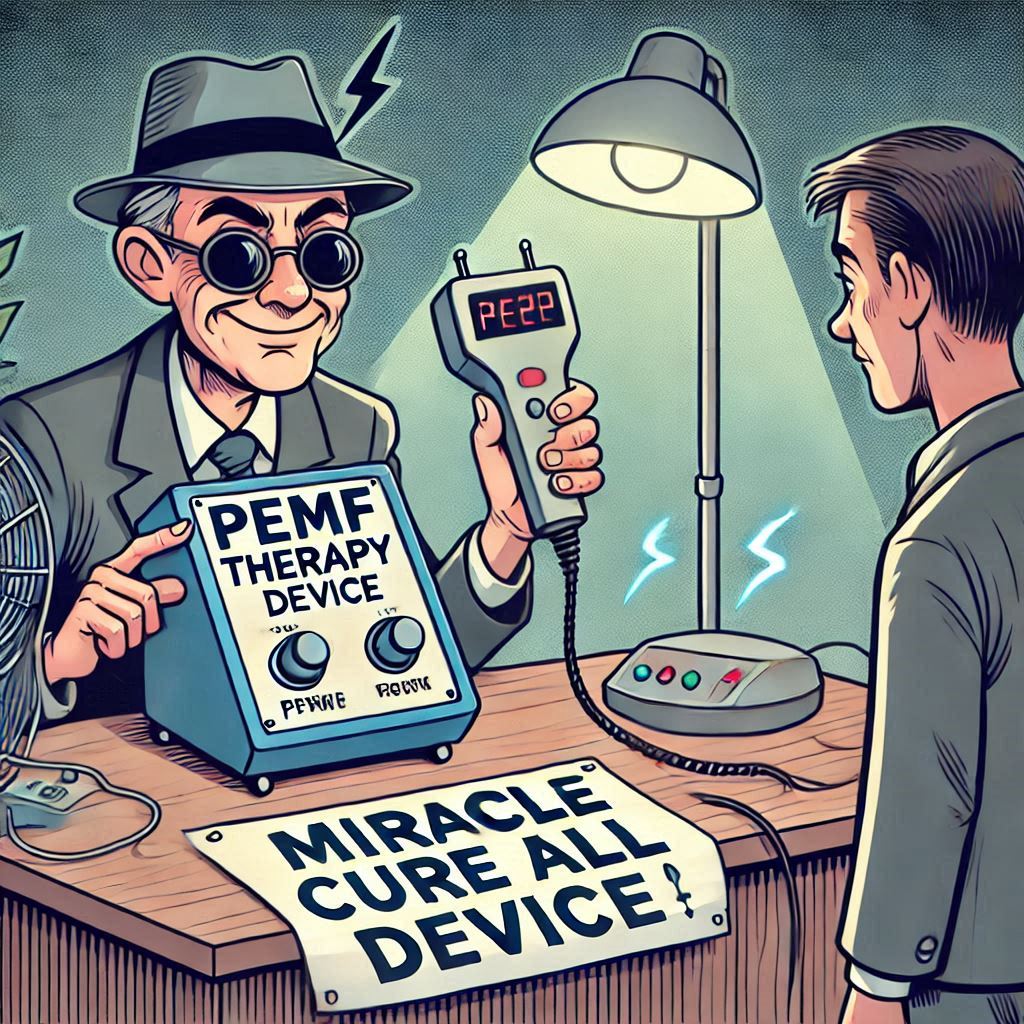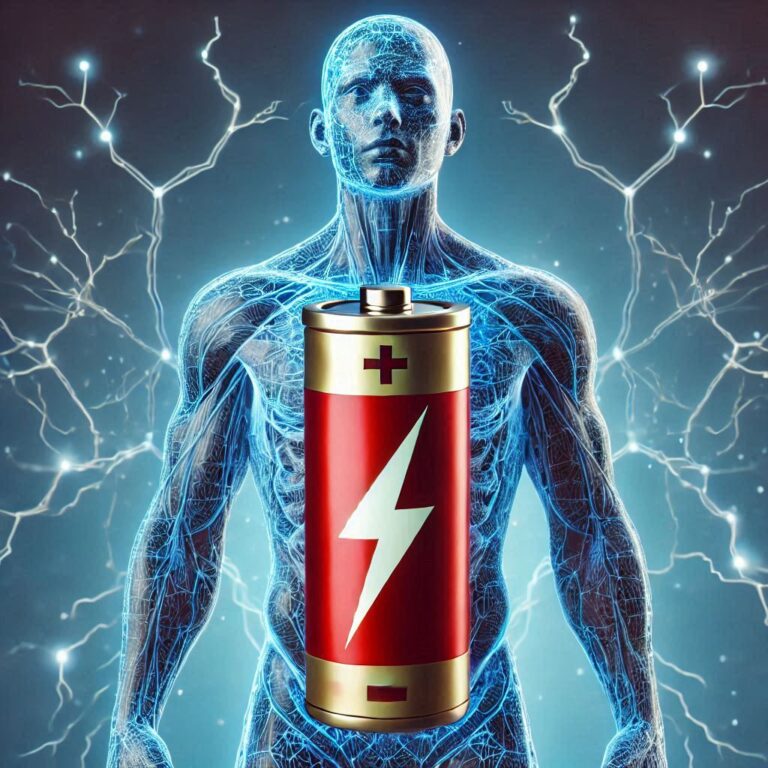Is PEMF Therapy A Scam?
PEMF Therapy: Cutting-Edge Science or Pseudoscience?
Pulsed Electromagnetic Field (PEMF) therapy has gained significant attention in recent years as a potential treatment for various health conditions. This article explores the science, efficacy, and practical applications of PEMF therapy, aiming to separate fact from fiction.
The Science Behind PEMF Therapy
PEMF therapy is based on the principle that our bodies are fundamentally electromagnetic in nature. Every cell in our body carries an electrical charge, and our overall health is influenced by the balance of these charges.
PEMF therapy aims to restore this balance by exposing the body to low-frequency electromagnetic fields.
The theory suggests that these pulsed fields can stimulate cellular repair, improve circulation, reduce inflammation, and enhance the body’s natural healing processes. While this may sound like a panacea, it’s essential to examine the scientific evidence supporting these claims.
FDA Approval: A Significant Milestone
One of the strongest arguments supporting PEMF therapy’s legitimacy is it’s FDA approval for specific medical conditions. The FDA has authorized the use of PEMF devices for treating:
- Non-union fractures
- Post-operative pain and edema
- Osteoarthritis of the knee
FDA approval needs substantial evidence from clinical trials demonstrating both safety and efficacy. This approval lends credibility to PEMF therapy as a legitimate medical treatment for these specific conditions.
However, keep in mind that FDA approval for specific conditions doesn’t mean PEMF therapy is effective for every claimed benefit. Many PEMF device manufacturers make broad claims about the therapy’s effectiveness for various conditions, some of which may not be supported by robust scientific evidence.
The Research Landscape
When examining the scientific literature on PEMF therapy, we find a mix of promising results and inconclusive findings. Let’s explore some of the key areas where PEMF therapy has been studied:
Bone Healing and Osteoporosis
Several studies have shown positive results in using PEMF therapy for bone healing. A 2020 systematic review published in the Journal of Orthopaedic Surgery and Research found that PEMF could significantly improve bone healing in patients with osteoporosis.
The review analyzed 15 studies and provides evidence that PEMF therapy could increase bone mineral density and reduce the risk of fractures in osteoporotic patients.
This aligns with the FDA’s approval for non-union fractures and suggests that PEMF therapy might have a legitimate role in orthopedic medicine. The mechanism behind this effect is thought to be related to PEMF’s ability to stimulate osteoblast activity and increase calcium uptake in bone tissue.
Pain Management
A 2018 meta-analysis published in Bioelectromagnetics found evidence supporting PEMF therapy’s efficacy in pain management for various conditions. The analysis included 62 studies and found that PEMF therapy was effective in reducing pain intensity across a range of conditions, including osteoarthritis, fibromyalgia, and chronic low back pain.
This finding is particularly interesting because chronic pain is notoriously difficult to treat, and any non-pharmacological option is worth exploring. PEMF therapy’s potential to reduce pain without the side effects associated with long-term medication use makes it an attractive option for many patients and healthcare providers.
Wound Healing
Research from the University of Texas Health Science Center demonstrated accelerated healing of diabetic wounds in animal models using PEMF therapy. The study, published in the Journal of Cellular Physiology, found that PEMF therapy increased the rate of wound closure and promoted the formation of new blood vessels in diabetic mice.
While animal studies don’t always translate directly to human outcomes, this research suggests potential applications in wound care, particularly for chronic wounds that are difficult to heal, such as diabetic ulcers.
Mental Health
A 2019 pilot study reported promising results for PEMF therapy in treating depression. The study, published in the Journal of Clinical Medicine Research, found that patients with treatment-resistant depression experienced significant improvements in depressive symptoms after receiving PEMF therapy.
This opens up an entirely new avenue for PEMF applications, potentially expanding it’s use beyond physical ailments. The mechanism behind this effect is thought to be related to PEMF’s ability to modulate neurotransmitter activity and increase neuroplasticity.
The Mechanism of Action: How Might It Work?
Understanding how PEMF therapy could potentially work at a cellular level adds credibility to it’s claims. Several mechanisms have been proposed:
Increased Nitric Oxide Production
PEMF therapy has been shown to increase the production of nitric oxide in cells. Nitric oxide is a crucial signalling molecule that plays a role in various physiological processes, including vasodilation, inflammation regulation, and cellular communication.
By increasing nitric oxide production, PEMF therapy may improve circulation and reduce inflammation throughout the body.
Enhanced Calcium Signalling
Calcium ions play a vital role in cellular communication and function. PEMF therapy has been shown to affect calcium signalling in cells, potentially improving cellular communication and function.
This effect may be particularly important in nerve cells, where calcium signalling is crucial for neurotransmitter release and synaptic plasticity.
Stimulation of Mitochondrial Activity
Some studies have suggested that PEMF therapy can stimulate mitochondrial activity, potentially increasing energy production in cells. This effect could have wide-ranging implications for cellular health and function, as mitochondria are the powerhouses of our cells, responsible for producing the energy needed for all cellular processes.
Modulation of Gene Expression
Research has shown that PEMF therapy can influence gene expression, potentially affecting cellular repair and regeneration processes. This effect could explain some of the long-term benefits observed with PEMF therapy, as changes in gene expression can lead to lasting changes in cellular function and behavior.
These proposed mechanisms are grounded in established biological principles, which lends some scientific credibility to PEMF therapy. However, more research is needed to fully understand and confirm these mechanisms, particularly in the context of specific health conditions.
Implementing PEMF Therapy: A Practical Guide
If you’re considering trying PEMF therapy, here’s a step-by-step guide to get you started:
1. Consult with a Healthcare Professional
Before starting any new therapy, it’s crucial to talk about it with your doctor, especially if you have any pre-existing conditions. Your healthcare provider can help you determine if PEMF therapy is suitable for your specific situation and can advise you on potential interactions with other treatments you may be receiving.
2. Choose the Right Device
PEMF devices come in various forms, from full-body mats to localized applicators. Research different options and select one that’s suitable for your needs and budget.
Consider factors such as:
- The specific health condition you’re targeting
- The device’s frequency range and intensity settings
- Ease of use and portability
- Cost and warranty
It’s important to choose a device from a reputable manufacturer that provides clear instructions and customer support.
3. Start with Low Intensity
Begin with lower frequency and intensity settings, gradually increasing as you become comfortable with the therapy. This approach allows your body to acclimate to the electromagnetic fields and reduces the risk of any adverse reactions.
4. Establish a Routine
Consistency is key when it comes to PEMF therapy. Set up a regular schedule for your PEMF sessions, typically starting with 15-30 minutes per day.
Some people prefer to use PEMF therapy in the morning to start their day, while others find it helpful for relaxation in the evening.
5. Monitor Your Progress
Keep a journal of your symptoms and any changes you notice. This will help you and your healthcare provider assess the therapy’s effectiveness.
Be sure to note:
- Changes in pain levels
- Improvements in mobility or function
- Changes in sleep quality
- Any side effects or unusual sensations
6. Be Patient
Like many alternative therapies, PEMF may take time to show results. Give it at least a few weeks before evaluating it’s impact.
Some people report feeling immediate effects, while others may not notice changes for several weeks or even months.
Common Pitfalls and How to Avoid Them
While PEMF therapy is generally considered safe, there are some potential pitfalls to be aware of:
Overreliance on PEMF
PEMF therapy should be viewed as a complementary treatment, not a replacement for conventional medical care. Continue to follow your doctor’s advice and maintain a healthy lifestyle alongside PEMF therapy.
Ignoring Contraindications
PEMF therapy may not be suitable for everyone. It’s generally contraindicated for:
- People with electrical implants (e.g., pacemakers)
- Pregnant women
- Those with active bleeding or haemorrhagic conditions
- Individuals with certain types of cancer
Always talk to a healthcare professional before starting PEMF therapy, especially if you have any pre-existing medical conditions.
Falling for Exaggerated Claims
Be wary of marketing that promises new cures or seems too good to be true. Stick to devices and providers that make reasonable claims supported by scientific evidence.
Using Incorrect Settings
Improper use of PEMF devices can lead to discomfort or reduced effectiveness. Follow manufacturer guidelines carefully and start with lower settings before gradually increasing intensity.
Neglecting Quality
Not all PEMF devices are created equal. Invest in a reputable brand with solid customer support.
Look for devices that have been cleared by regulatory bodies like the FDA or CE marked for medical use in Europe.
Adapting PEMF Therapy to Different Scenarios
PEMF therapy can be adapted to various health goals and lifestyles:
For Chronic Pain
Focus on longer, daily sessions targeting specific areas of pain. You may find it helpful to use PEMF therapy in conjunction with other pain management techniques, such as physical therapy or gentle exercise.
For Sleep Improvement
Use lower frequencies in the evening to promote relaxation and better sleep. Many PEMF devices have specific programs designed for sleep enhancement, which typically use very low frequencies (around 1-10 Hz) to mimic the brain’s natural sleep rhythms.
For Athletic Recovery
Incorporate PEMF sessions after intense workouts to potentially reduce muscle soreness and improve recovery time. Some athletes use PEMF therapy before competitions to improve blood flow and prepare their muscles for performance.
For Stress Reduction
Combine PEMF therapy with meditation or deep breathing exercises for a holistic approach to stress management. Many people find that PEMF therapy helps them achieve a deeper state of relaxation during meditation practices.
For Cognitive Function
Some users report improved focus and mental clarity with regular PEMF use. Consider short sessions before tasks requiring concentration.
Some PEMF devices offer specific programs designed to enhance cognitive function, typically using frequencies in the alpha and beta ranges (8-30 Hz).
Building on Basics: From Novice to PEMF Expert
As you become more familiar with PEMF therapy, you can start to explore more advanced applications:
Experiment with Different Frequencies
Different frequencies are thought to have different effects on the body. For example:
- 0.5-4 Hz: Associated with deep relaxation and sleep
- 4-8 Hz: Linked to pain relief and reduced inflammation
- 8-13 Hz: May enhance mood and stress reduction
- 16-24 Hz: Could improve focus and cognitive function
Try different frequencies for various health goals and note how your body responds.
Combine PEMF with Other Therapies
PEMF therapy can be combined with other complementary treatments for potentially enhanced effects. Some people find benefits in combining PEMF with:
- Acupuncture
- Massage therapy
- Infrared light therapy
- Nutritional supplements
Always talk to your healthcare provider before combining therapies to confirm safety and avoid potential interactions.
Learn About the Electromagnetic Spectrum
Deepen your understanding of how different frequencies might affect the body by studying the electromagnetic spectrum. This knowledge can help you make more informed decisions about your PEMF therapy and understand the scientific principles behind it.
Stay Updated on PEMF Research
The field of PEMF therapy is constantly evolving, with new research emerging regularly. Stay informed by:
- Following reputable scientific journals
- Attending conferences or webinars on PEMF therapy
- Joining online communities dedicated to PEMF users and practitioners
Track Your Progress with Biomarkers
Consider tracking your progress with more advanced health metrics. Some options include:
- Heart rate variability (HRV) measurements
- Inflammatory markers in blood tests
- Sleep quality metrics from wearable devices
- Functional assessments for specific conditions (e.g., range of motion for joint issues)
Exercises to Enhance Your PEMF Experience
To get the most out of your PEMF therapy, try these exercises:
Body Scanning
Before and after each session, perform a mental scan of your body, noting any areas of tension or discomfort. This practice can help you track subtle changes over time and become more attuned to your body’s responses to PEMF therapy.
Visualization
During PEMF sessions, visualize the electromagnetic fields penetrating and healing your cells. This mind-body connection may enhance the therapy’s effects by promoting a positive mindset and reducing stress.
Breathing Exercises
Incorporate deep, rhythmic breathing during your PEMF sessions to promote relaxation and potentially improve circulation. Try this simple technique:
- Inhale deeply through your nose for a count of 4
- Hold your breath for a count of 4
- Exhale slowly through your mouth for a count of 6
- Repeat for the duration of your PEMF session
Gradual Exposure
If you’re sensitive to electromagnetic fields, start with very short sessions and gradually increase duration as your body adapts. Begin with just a few minutes per day and slowly work your way up to longer sessions over the course of several weeks.
Targeted Positioning
Experiment with different body positions to target specific areas more effectively during PEMF sessions. For example:
- For lower back pain, try lying on your stomach with a pillow under your hips
- For shoulder issues, sit in a comfortable chair with the PEMF applicator placed directly on the affected area
- For overall relaxation, lie on your back with your arms at your sides and legs slightly apart
People Also Asked
What is PEMF therapy used for?
PEMF therapy is used for various conditions including pain management, bone healing, improving circulation, reducing inflammation, and enhancing overall wellness. It has FDA approval for treating non-union fractures, post-operative pain, and osteoarthritis of the knee.
How often should you use PEMF therapy?
The frequency of PEMF therapy sessions can vary depending on the condition being treated and the device being used. Generally, daily sessions of 15-30 minutes are common, but some conditions may need multiple sessions per day or longer durations.
Are there any side effects of PEMF therapy?
PEMF therapy is generally considered safe with few side effects. Some users may experience mild discomfort, temporary increase in pain, or fatigue during initial use.
These effects typically subside as the body adjusts to the therapy.
Can PEMF therapy help with arthritis pain?
Several studies have shown that PEMF therapy can be effective in reducing pain and improving function in patients with osteoarthritis, particularly of the knee. It may help reduce inflammation and promote cartilage regeneration.
Is PEMF therapy covered by insurance?
Coverage for PEMF therapy varies by insurance provider and the specific condition being treated. Some insurance plans may cover PEMF therapy for FDA-approved uses, such as bone healing. It’s best to check with your insurance provider for specific coverage details.
How long does it take to see results from PEMF therapy?
The time to see results from PEMF therapy can vary widely depending on the condition being treated and personal factors. Some people report feeling immediate effects, while others may not notice changes for several weeks or even months of consistent use.
Can PEMF therapy help with sleep problems?
Some users report improved sleep quality with regular PEMF therapy. Low-frequency PEMF sessions, particularly in the evening, may help promote relaxation and better sleep.
However, more research is needed to fully understand the effects of PEMF on sleep disorders.
Is PEMF therapy safe to use with metal implants?
PEMF therapy is generally considered safe for use with most metal implants, as the electromagnetic fields used are typically not strong enough to affect the implants. However, it’s crucial to talk to your healthcare provider before using PEMF therapy if you have any metal implants, especially active implants like pacemakers.
Can PEMF therapy help with depression?
Some preliminary research suggests that PEMF therapy may have potential benefits for treating depression, particularly treatment-resistant depression. However, more large-scale studies are needed to confirm these findings and determine optimal treatment protocols.
How does PEMF therapy compare to other electromagnetic therapies?
PEMF therapy uses pulsed electromagnetic fields, which differ from continuous electromagnetic fields used in some other therapies. PEMF is generally considered safer and more effective than continuous field therapies for many applications.
However, the efficacy can vary depending on the specific condition and therapy being compared.
Key Takeaways
- PEMF therapy has FDA approval for specific conditions, lending it credibility in medical treatment.
- Scientific research shows mixed but promising results, particularly in bone healing and pain management.
- The therapy’s proposed mechanisms of action are grounded in established biological principles.
- Proper implementation and patience are crucial for potentially experiencing benefits.
- PEMF therapy should complement, not replace, conventional medical treatments.
- As with any alternative therapy, approach PEMF with an open but critical mind, and always prioritize safety and professional medical advice.




